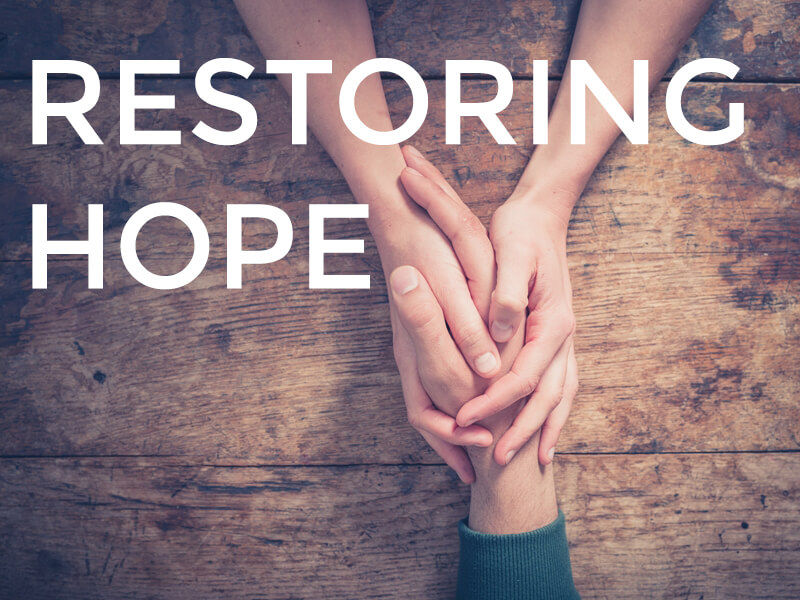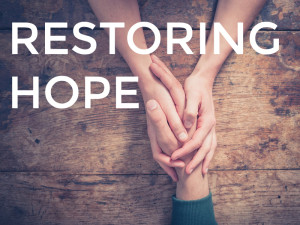
Restoring Hope
 Many who have been hiding behind learned hopelessness have come to wear an armor, more so than just a mask. As a therapist, I first have to let my client know I see the armor and honor it. I validate that, along the way, they believed they needed it in order to protect themselves from real or perceived hurt. I assure the client that I am in no way looking to remove that armor, considering they have be relying on it as their primary coping mechanism. I will be, however, looking for a small crack in it, or trying to create one. There is usually relief when they hear that I understand its necessity and am reassuring that they can continue to wear it for as long as they want.
Many who have been hiding behind learned hopelessness have come to wear an armor, more so than just a mask. As a therapist, I first have to let my client know I see the armor and honor it. I validate that, along the way, they believed they needed it in order to protect themselves from real or perceived hurt. I assure the client that I am in no way looking to remove that armor, considering they have be relying on it as their primary coping mechanism. I will be, however, looking for a small crack in it, or trying to create one. There is usually relief when they hear that I understand its necessity and am reassuring that they can continue to wear it for as long as they want.
We will, at some point, talk about their goals. Most would like to improve relationships with friends and family, become more social, and feel “normal.” Those goals sound wonderful and reasonable. I point out how difficult it would be to do this while wearing and carrying around the weight of their armor and, no wonder they have been having some challenges in these areas.
We then proceed with therapy. As our relationship grows, I begin to gently point out some things I notice: sitting taller, more engaged, smiling bigger and, more often, laughing, wearing brighter clothing, etc. These are real observations, facts that something is happening. I will ask them about their energy level, how they are getting along with others, have they been doing things that make them feel good, smiling more, or laughing more? Typically, by now, there is evidence of a higher level of energy and a greater degree of fully “showing up.”
Shortly after, one of two things usually happen: My client will either come in and report feeling awkwardly good, almost happy, and “normal.” They usually say this in a shy timid way, because they have been telling me since the beginning “I’m never going to be happy/normal/hopeful again, ever,” and now, they just proved themselves wrong. We celebrate a little bit at this breakthrough. Alternatively, when the progress is too small for my client to notice him/herself, I might have to point out the fact that we have finally made a crack in the armor, because I can begin to see their light shining through it, of course, followed by a little celebration.
Once there is a crack in the armor, the light that has been there since they were born, but covered up for one reason or another, finally begins to seep out. They begin to feel the light within, notice it, and realize how good it feels. This light, and the realization that they can feel good again, brings with it hope.
This is an opportunity to challenge a previous faulty belief that “my life will always be miserable, and I will never feel hope” to a more realistic belief of “I am able to feel hope and I am able to feel good again.” Once clients get a taste of this, they connect it with hope; and once there is hope, all things are possible.
From this point on, we typically start work on learning to trust oneself and opening up to one’s future with confidence and excitement. This can be a tricky time of treatment because often there is a fear that this hope will end and they will once again spiral into the abyss of misery. I remind my clients of their progress, of how far they’ve come, the tools they have acquired, and the practice they have had catching themselves falling, and picking themselves back up again. This reinforces that they are not the same at they were when they entered, nor is the outcome of their life.
The hope is that when our participants are ready for discharge, they have a more realistic sense of themselves and all of the opportunities of a rich and satisfying future. Launching a young adult back into the world is a great feeling. It’s great when participants can smile and walk forward with a sense of self-reliance, knowing that they can face what may come their way or when to reach out to for help. At OPI, hope happens.
